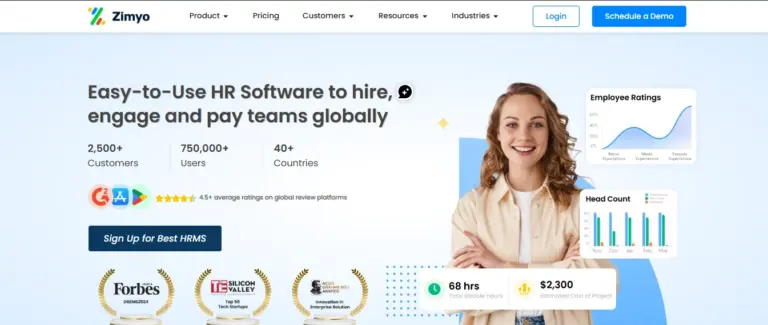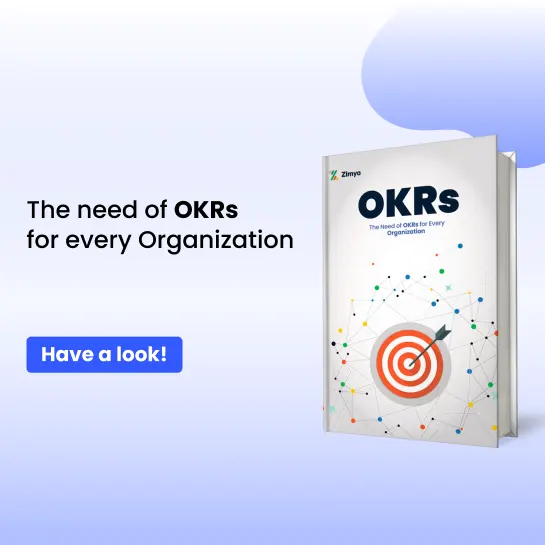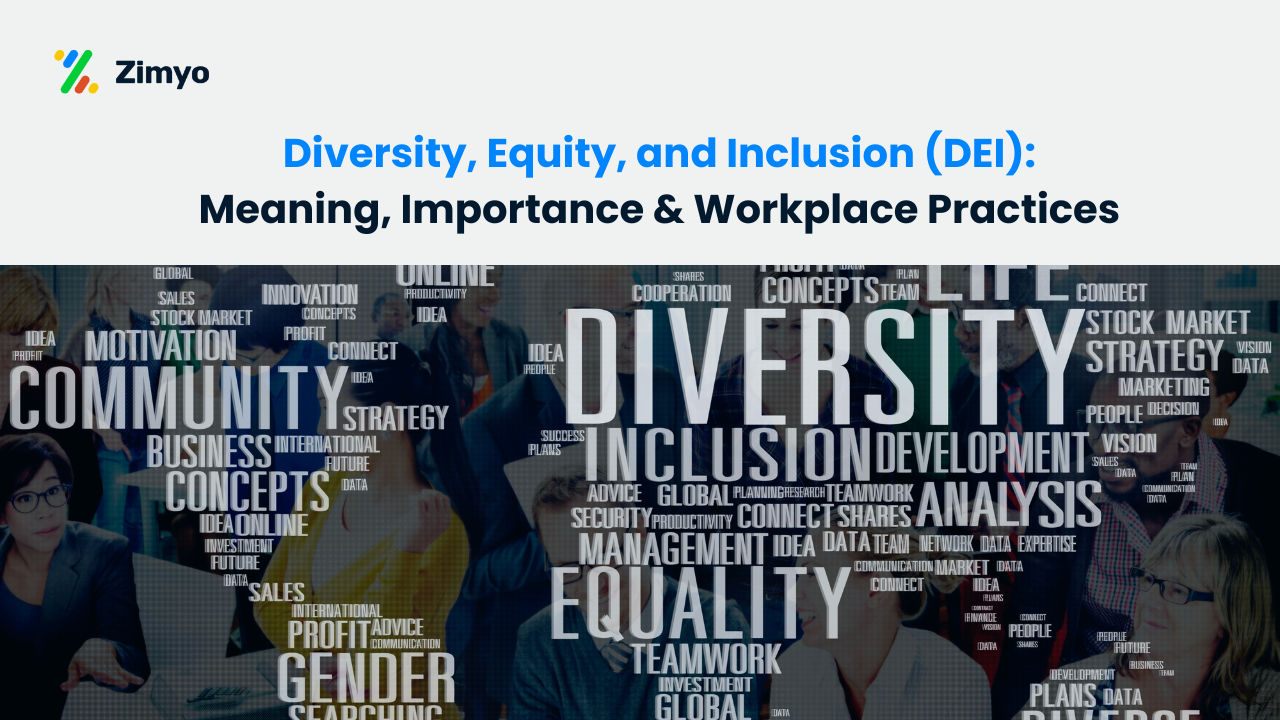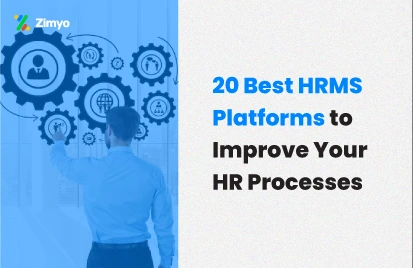Employee data is the lifeblood of HR operations. Every organization, whether small or large, handles tons of information related to its employees. From basic contact details to complex payroll structures, this data is vital for smooth operations.
In the past, companies managed this information using physical files or spreadsheets. While it worked to some extent, it was inefficient, prone to errors, and difficult to scale. Imagine having to find an employee’s five-year-old appraisal record in a stack of papers, it could take hours!
Today’s workforce is more dynamic with stricter regulations. This makes it crucial for companies to have a centralized system that can store, process, and safeguard all employee information. That’s exactly what an Employee Database Management System (EDMS) does, it transforms messy data into a structured, accessible, and reliable system.
What is an Employee Database Management System?
An Employee Database Management System is a digital platform designed to store, manage, and update employee records. Unlike traditional spreadsheets, this system provides structured data organization with automation, analytics, and security features.

Here’s how it works:
- Each employee has a dedicated profile in the system.
- HR managers can update and track details like personal info, performance metrics, leave history, and payroll.
- The system syncs data across departments, ensuring consistency.
- It allows quick search, retrieval, and reporting of employee information.
Think of it as a smart HR filing cabinet that not only stores files but also gives insights, prevents errors, and helps HR professionals make informed decisions. In essence, it streamlines the entire employee lifecycle, from recruitment to exit.
Importance of a Human Resource Database Management System
The significance of a human resource database management system goes beyond convenience. It directly impacts productivity, compliance, and organizational growth. Let’s explore why it matters:
- Time Savings: Instead of spending hours on manual data entry or looking for records, HR teams can retrieve information instantly.
- Error Reduction: Automated data management minimizes the chances of mistakes in payroll, attendance, or employee records.
- Compliance and Legal Security: Labor laws often require detailed documentation. A structured system ensures HR can produce accurate records during audits.
- Employee Satisfaction: Employees appreciate transparency. Self-service options allow them to access payslips, leave balances, or update details without constant HR involvement.
- Data-Driven Strategy: With detailed analytics, organizations can track workforce trends, predict attrition, and design better policies.
Simply put, an employee data management system makes HR not just an administrative function, but a strategic driver of business success.
Key Features of Employee Database Management Software
Modern employee database management software comes packed with features that simplify HR processes and make data management more efficient. Let’s look at each in detail:
1. Centralized Employee Profiles
Every employee’s information, personal details, job history, payroll data, performance reviews, training records etc is stored in one unified profile. This prevents duplication and makes data retrieval effortless.
2. Role-Based Access Control
Sensitive information like salaries or medical records must remain confidential. The system allows HR to grant specific access levels, ensuring only authorized individuals can view or edit certain data.
3. Automation of HR Processes
Instead of manually updating leave balances or generating payslips, the system does it automatically. This reduces workload and ensures consistency across records.
4. Integration with Other HR Tools
A good employee management database integrates seamlessly with payroll software, attendance systems, and performance management tools. This creates a connected ecosystem that eliminates silos.
5. Analytics & Reporting
One of the biggest advantages is the ability to generate real-time reports be it headcount, attrition rate, payroll costs, or training ROI. These insights help HR and leadership make informed decisions.
6. Cloud Accessibility & Mobility
Cloud-based systems allow HR managers and employees to access the database securely from anywhere. In today’s hybrid work culture, this flexibility is invaluable.
Benefits of Using an Employee Management Database
Adopting an employee management database brings multiple benefits, not just for HR but for the entire organization:
- Operational Efficiency: Routine tasks like updating records or generating reports become quick and hassle-free.
- Data Accuracy: Automated updates prevent human errors that can lead to compliance risks or payroll disputes.
- Cost Savings: Reduced manual effort means lower administrative costs. Plus, fewer mistakes save money in the long run.
- Enhanced Transparency: Employees gain access to their own data, fostering trust and reducing dependency on HR for every small query.
- Scalability for Growth: As the workforce grows, the system easily accommodates new records without affecting speed or efficiency.
Example: A retail chain with 2,000 employees reduced HR’s administrative workload by 40% after implementing a human resource database management system, freeing up time for employee engagement initiatives.
How to Choose the Right Employee Data Management System
Selecting the right employee database management software is a strategic decision. Here are factors to consider:
- Ease of Use: The system should be intuitive for both HR and employees. A complicated interface discourages adoption.
- Integration Capabilities: It should connect with payroll, attendance, and performance tools to provide a seamless HR ecosystem.
- Security Features: Data encryption, two-factor authentication, and role-based access are must-haves.
- Customization Options: Every organization has unique policies. The system should allow flexibility in workflows, approvals, and reporting.
- Vendor Support: Reliable after-sales service, training, and upgrades are essential for long-term success.
Tip: Always opt for a demo or trial before finalizing the system to ensure it meets your specific HR needs.
I was able to implement the platform on my own. It helps in assigning the tasks to other employees, conducting surveys and polls, and much more. The ease of use and self-onboarding is something that I would like to appreciate.
Sonali, Kommunicate
Zimyo simplifies attendance management for our organization. The leave and attendance are so streamlined that we have never faced any difficulties with the system.
Anurag, Eggoz Nutrition
Future Trends in Employee Database Management Systems
The future of employee database management systems looks promising with technology advancements:
- AI-Powered Insights: Predict turnover, identify skill gaps, and suggest training programs automatically.
- Cloud-First Platforms: Ensure global accessibility with enhanced disaster recovery options.
- Mobile HR Apps: Employees and HR managers can access or update data anytime, anywhere.
- Blockchain Security: Provides tamper-proof employee records, especially useful for sensitive data.
- Self-Learning Systems: Automate workflows by learning from past HR activities and decisions.
These innovations will make employee data management in HR not just operational but also strategic and predictive.
Why Zimyo is the Best Employee Database Management System
While there are many options available in the market, Zimyo stands out as one of the most comprehensive and user-friendly Employee Database Management Systems. Designed with both HR professionals and employees in mind, Zimyo goes beyond simple data storage, it transforms the way organizations manage their workforce.

Here’s why Zimyo is the best choice:
- Centralized HR Database
Zimyo offers a unified employee management database where HR teams can store everything—from personal details to payroll records, performance reviews, and compliance documents. All information is easy to access, update, and track. - Seamless Integration with HR Tools
Unlike standalone systems, Zimyo integrates with payroll, attendance, leave management, and performance systems. This ensures that HR operations run smoothly without switching between multiple platforms. - Role-Based Access & Security
Employee data is highly sensitive, and Zimyo ensures top-notch protection with advanced encryption, role-based access, and audit trails. HR teams can rest assured knowing data is secure and compliant with industry standards. - Employee Self-Service Portal
One of Zimyo’s strongest features is its self-service portal. Employees can update personal details, check payslips, request leaves, or view performance data without burdening HR. This transparency improves employee satisfaction and trust. - Scalable for Businesses of All Sizes
Whether you’re a 50-member startup or a 5,000-employee enterprise, Zimyo scales effortlessly. Its flexibility makes it a perfect fit for both small businesses and large organizations. - Analytics & Insights
Zimyo doesn’t just store data—it helps HR make sense of it. With smart dashboards and reports, HR leaders can track attrition trends, monitor workforce distribution, and forecast future staffing needs. - User-Friendly Design
Unlike clunky traditional systems, Zimyo’s intuitive interface makes navigation easy. Even employees with minimal technical knowledge can use it confidently.
Conclusion
An Employee Database Management System is not just a software tool, it’s a strategic enabler of modern HR. It simplifies data management, strengthens compliance, improves accuracy, and empowers employees with transparency.
For growing businesses, adopting the right employee data management system means fewer headaches, more efficiency, and a stronger foundation for scaling. For HR teams, it’s the difference between being stuck in paperwork and becoming a true driver of organizational success.
In the future, as AI and automation evolve, employee database management software will play an even bigger role in shaping smarter, more agile, and people-focused workplaces.
FAQs
What is an Employee Database Management System?
An Employee Database Management System is a digital solution that stores, manages, and organizes employee information in one centralized platform. It helps HR teams handle data efficiently, reduce errors, and improve compliance.
Why is an employee data management system important for HR?
An employee data management system ensures accuracy, saves time, secures sensitive employee data, and supports compliance with labor laws. It also helps HR teams make data-driven decisions.
What are the key features of employee database management software?
Core features include centralized employee profiles, role-based access, payroll and attendance integration, automated updates, analytics and reporting, and cloud accessibility for remote use.
How does an employee management database benefit organizations?
An employee management database improves operational efficiency, reduces administrative workload, minimizes compliance risks, enhances transparency with self-service portals, and scales easily as the business grows.
Which is the best Employee Database Management System?
The best choice depends on your organization’s needs. However, platforms like Zimyo are highly rated for their user-friendly design, strong security, integration capabilities, and scalability for both small and large businesses.









